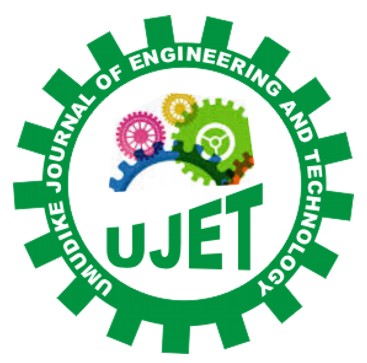|
John, A. T.
Department of Civil Engineering, University of Benin, Benin City, Nigeria
Osuji, S. O.
Department of Civil Engineering, University of Benin, Benin City, Nigeria
Nwankwo, E.
Department of Civil Engineering, University of Benin, Benin City, Nigeria
ABSTRACT
Epoxy bonded steel plate (EBP) had been shown to
be an effective structural strengthening method for degraded and old civil structures.
A good number of research have been geared to study strengthening technique
over the last two decades. However, the optimum bond thickness that would be
structurally acceptable remains a gap in the literature. The intention of this
study is to determine experimentally the optimum bond thickness of reinforced
concrete (RC) beam strengthened externally by bonded steel plates. To achieve
the aim, thirty-Nine (39) beams were tested. Each beam sample had 100 x 150 mm
cross section and 1100mm length with a shear span to depth ratio (av/d) of 2.5
and were reinforced with 2ϕ10 mm and 2Φ8 mm reinforcements in the zone
presumed to go into tension and compression respectively. The shear
reinforcements were provided with Φ6mm links at 220mm centre to centre. Four
bond layer thicknesses, 2 mm, 4mm 6 and 8mm, were chosen. For each bond layer
thickness, three (3) levels of plate thickness were chosen-l.0 mm, 1.5 mm, and
2mm, all with constant breadth and length of 80mm and 1000mm respectively. The
tension surfaces of the beams were prepared to remove all cement paste and were
thoroughly cleaned of loose particles. Both side of the steel plates were
totally cleaned and then kept safeguarded from contamination. The two-part
structural epoxy resin was mixed thoroughly and bonded to the tension surfaces
of the beams to the required thickness-2mm, 4mm, 6mm, and 8mm. the steel plate
was placed at the right location, and kept in position for proper boding. At
least 7-day was allowed between strengthening and loading of the beams. The
beams were strengthened with 1, 1.5 and 2mm thick plates of four different
levels of bond thickness-2mm, 4mm, 6mm, and 8mm respectively at the tension
face. All the beams were instrumented as simply supported. According to the
findings, there is a maximum bond thickness that would be structurally
acceptable for RC beams strengthened or upgraded with structural steel plate.
Results also confirmed that as the bond thickness increases, the ductility
index reduces. Strengthening reinforced concrete beam with steel plate
increases the stiffness of the beam. In order to maintain composite behavior up
to the point of failure, steel plate thickness to bond thickness ratio should
be kept within the range of 0.3 to 0.4 for beams strengthened while the
thickness-to-width ratio of steel plates shall not be more than 0.015.
Keywords: Optimum bond thickness; strengthening: Contribution to bending strength: Ductility index
https://doi.org/10.33922/j.ujet_v8i1_4
|
View: 360 | Download: 17
Published
Wednesday, June 08, 2022
Issue
Vol. 8 No. 1, June 2022
Article Section
GENERAL
The contents of the articles are the sole opinion of the author(s) and not of UJET.
|


